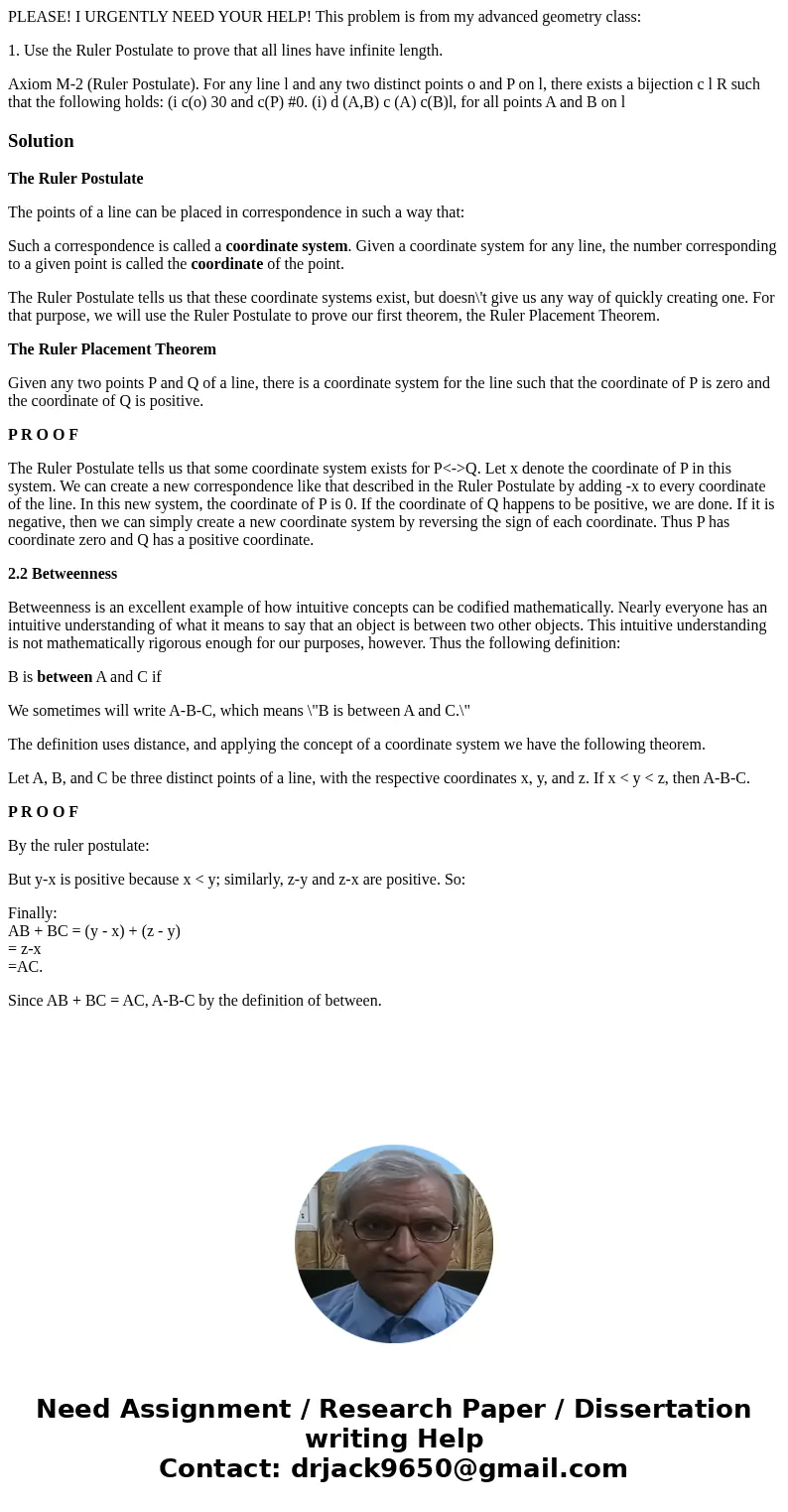PLEASE I URGENTLY NEED YOUR HELP This problem is from my adv
PLEASE! I URGENTLY NEED YOUR HELP! This problem is from my advanced geometry class:
1. Use the Ruler Postulate to prove that all lines have infinite length.
Axiom M-2 (Ruler Postulate). For any line l and any two distinct points o and P on l, there exists a bijection c l R such that the following holds: (i c(o) 30 and c(P) #0. (i) d (A,B) c (A) c(B)l, for all points A and B on lSolution
The Ruler Postulate
The points of a line can be placed in correspondence in such a way that:
Such a correspondence is called a coordinate system. Given a coordinate system for any line, the number corresponding to a given point is called the coordinate of the point.
The Ruler Postulate tells us that these coordinate systems exist, but doesn\'t give us any way of quickly creating one. For that purpose, we will use the Ruler Postulate to prove our first theorem, the Ruler Placement Theorem.
The Ruler Placement Theorem
Given any two points P and Q of a line, there is a coordinate system for the line such that the coordinate of P is zero and the coordinate of Q is positive.
P R O O F
The Ruler Postulate tells us that some coordinate system exists for P<->Q. Let x denote the coordinate of P in this system. We can create a new correspondence like that described in the Ruler Postulate by adding -x to every coordinate of the line. In this new system, the coordinate of P is 0. If the coordinate of Q happens to be positive, we are done. If it is negative, then we can simply create a new coordinate system by reversing the sign of each coordinate. Thus P has coordinate zero and Q has a positive coordinate.
2.2 Betweenness
Betweenness is an excellent example of how intuitive concepts can be codified mathematically. Nearly everyone has an intuitive understanding of what it means to say that an object is between two other objects. This intuitive understanding is not mathematically rigorous enough for our purposes, however. Thus the following definition:
B is between A and C if
We sometimes will write A-B-C, which means \"B is between A and C.\"
The definition uses distance, and applying the concept of a coordinate system we have the following theorem.
Let A, B, and C be three distinct points of a line, with the respective coordinates x, y, and z. If x < y < z, then A-B-C.
P R O O F
By the ruler postulate:
But y-x is positive because x < y; similarly, z-y and z-x are positive. So:
Finally:
AB + BC = (y - x) + (z - y)
= z-x
=AC.
Since AB + BC = AC, A-B-C by the definition of between.

 Homework Sourse
Homework Sourse